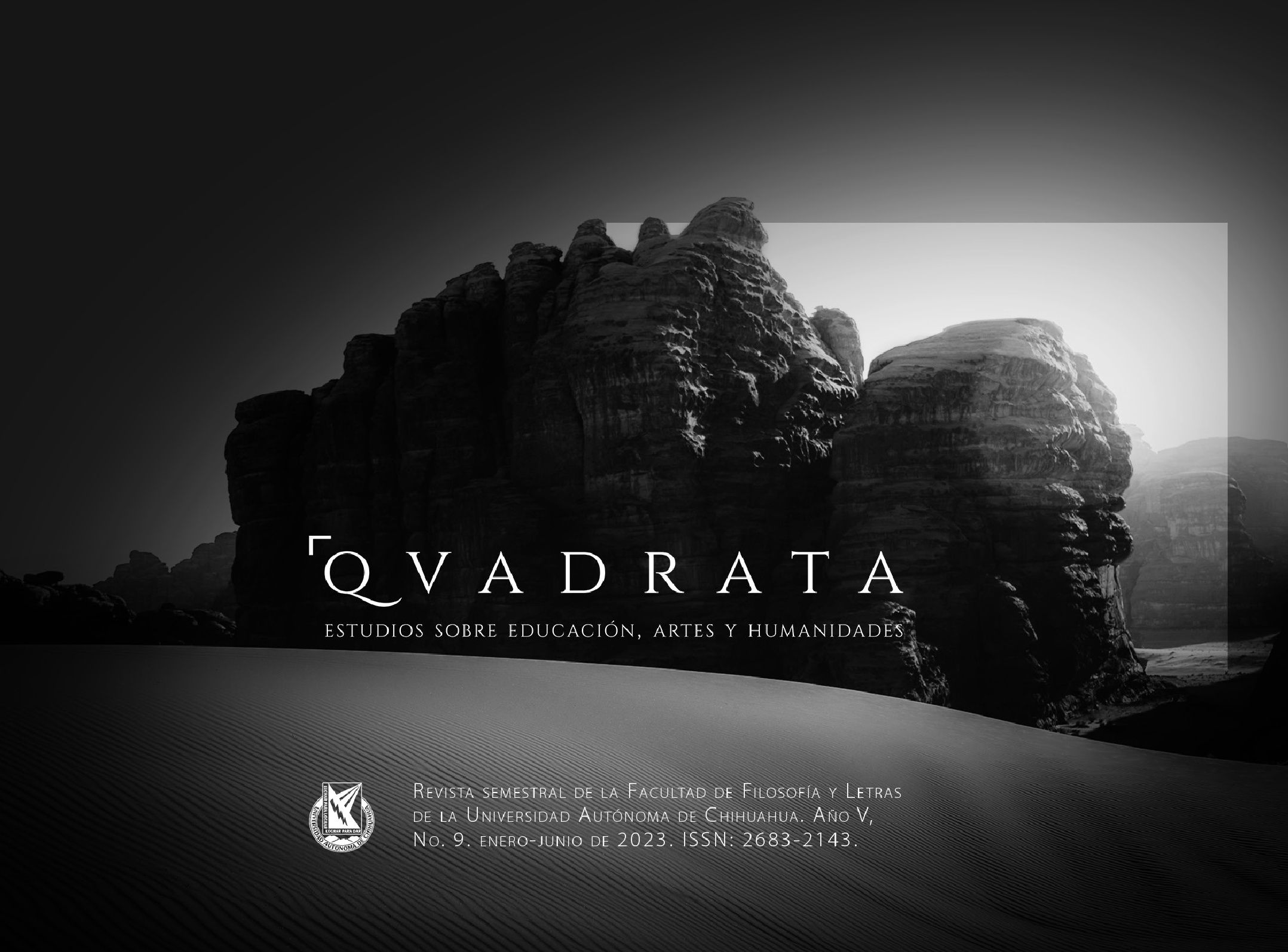Experiencias de un artista en la producción de obra
¿Quiénes son ellos? Proyecto artístico
DOI:
https://doi.org/10.54167/qvadrata.v5i9.1164Keywords:
Investigación basada en las artes, ensayo de fotografía, proyecto artístico fotográfico, economía naranja, indigenciaAbstract
This essay focuses on crystallizing artistic projects as a material that is promoted, exhibited and marketed in certain social spheres, its production and the experiences of the artist, are conjunctions that regularly remain isolated from the work. The Art-Based Research methodology clarifies the processes and circumstances that an artist undergoes to achieve the production of the material. This text focuses on the situations experienced as an artist when preparing and producing photographic pieces on indigence in the city of Chihuahua, as well as the questions that arise about the paradigms of art Finally, it is important to mention that obtaining knowledge through of the IBA is crystallized through the questions and answers throughout this text. However, this knowledge is not a generic methodology that can be implemented in artistic photography works.
References
Barckhausen, Christiane. Tina Modotti. Txalaparta, 1998.
Bauman, Zygmunt. Vida de consumo. Traducido por Mirta Rosenberg y Jaime Arrambide, Fondo de Cultura Economica, 2012, https://itunes. apple.com/mx/book/vida-de-consumo/id594642003?mt=11.
Beker, Víctor. Las alarmantes cifras de la pobreza y la indigencia. Universidad de Belgrano-Centro de Estudios de la Nueva Economía (CENE), 2021.
Carrillo Quiroga, Perla. “La investigación basada en la práctica de las artes y los medios audiovisuales”. RMIE, vol. 20, núm. 64.
Cortés Picazo, Luis Claudio, y Noemí Grinspun Siguelnitzky. “La importancia del cuerpo en las prácticas pedagógicas en Artes Visuales”. Perspectiva Educacional, vol. 58, núm. 3, octubre de 2019, https://doi.org/10.4151/07189729-vol.58-iss.3-art.865.
Davis, Flora. La comunicación no verbal. Editado por Lita Mourglier, Alianza, 1975, p. 270, http://bajaepub.com/book/el-lenguaje-de-los-gestos-2603/.
Del Águila, Luisa María Gómez. “Accesibilidad e inclusión en espacios de arte:¿ cómo materializar la utopía?” Arte, Individuo y Sociedad, vol. 24, núm. 1, 2012, pp. 77–90.
Ekman, Paul. “¿Qué dice ese gesto? Barcelona: Integral, 2003. 320 p. GASSER
Luciano; KELLER, Monika. Are the competent the morally good? Perspective taking and moral motivation of children involved in bullying”. Social Development, Malden, vol. 18, núm. 4, 2009, pp. 198–816.
Fundación Telefónica de Perú. Nuevas realidades. Arte, diseño y creatividad digital. Primera edición, 2016.
Gautrand, Jean-Claude. Robert Doisneau. Taschen Cologne, Germany, 2003.
Heiferman, Marvin. Photography Changes Everything. Smithsonian Institution, 2012.
Juárez-Ramírez, Clara, et al. “La desigualdad en salud de grupos vulnerables de México: adultos mayores, indígenas y migrantes”. Revista Panamericana de Salud Pública, vol. 35, núm. 4, 2014, pp. 284–90.
Lange, Dorothea, y Christopher Cox. Dorothea Lange. Aperture, 1987.
Margolis, E., y L. Pauwels. The SAGE Handbook of Visual Research Methods. SAGE Publications, 2011.
Mesías-Lema, José María, y Ricard Ramon. “La fotografía en la investigación educativa basada en las artes”. IJABER. International Journal of Arts-Based Educational Research, vol. 1, núm. 1, marzo de 2021, pp. 7–22, https://doi.org/10.17979/ijaber.2021.1.1.7618.
Pele, Antonio. La dignidad humana. 2010.
Rosler, Martha. Decoys and disruptions: selected writings, 1975-2001. Mit Press, 2004.
Sampsell-Willmann, Kate. Lewis Hine as social critic. Univ. Press of Mississippi, 2009.
Valtierra, Pedro. “Pedro Valtierra”. Universidades, núm. 70, 2016, https://www.redalyc.org/articulo.oa?id=37348529007.





 QVADRATA. Estudios sobre Educación, Artes y Humanidades año V, número 9, enero-junio de 2023, es una publicación semestral editada por la Universidad Autónoma de Chihuahua. Calle Escorza #900. C.P. 31000, Chihuahua, Chih. Tel. (614) 439-1500 ext. 3844,
QVADRATA. Estudios sobre Educación, Artes y Humanidades año V, número 9, enero-junio de 2023, es una publicación semestral editada por la Universidad Autónoma de Chihuahua. Calle Escorza #900. C.P. 31000, Chihuahua, Chih. Tel. (614) 439-1500 ext. 3844, 
